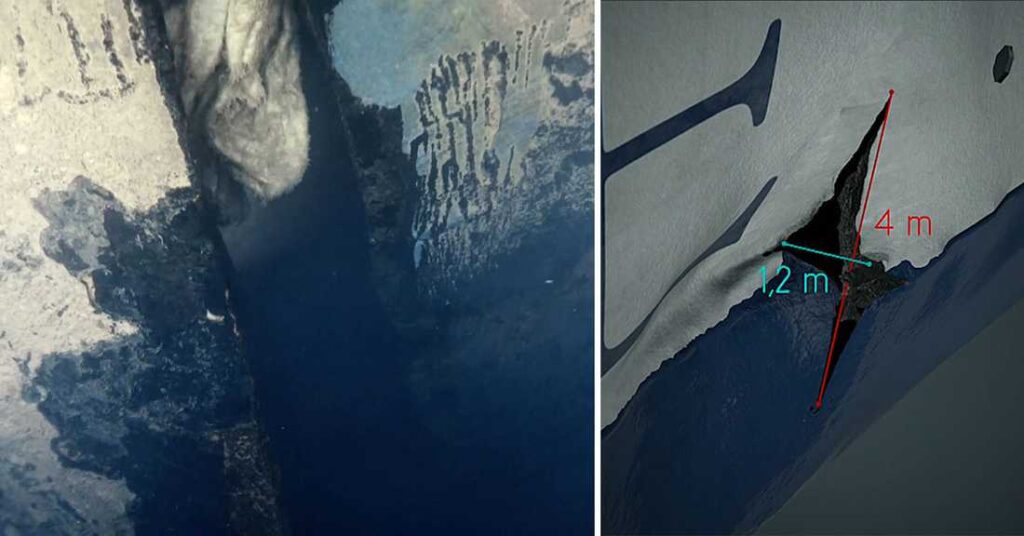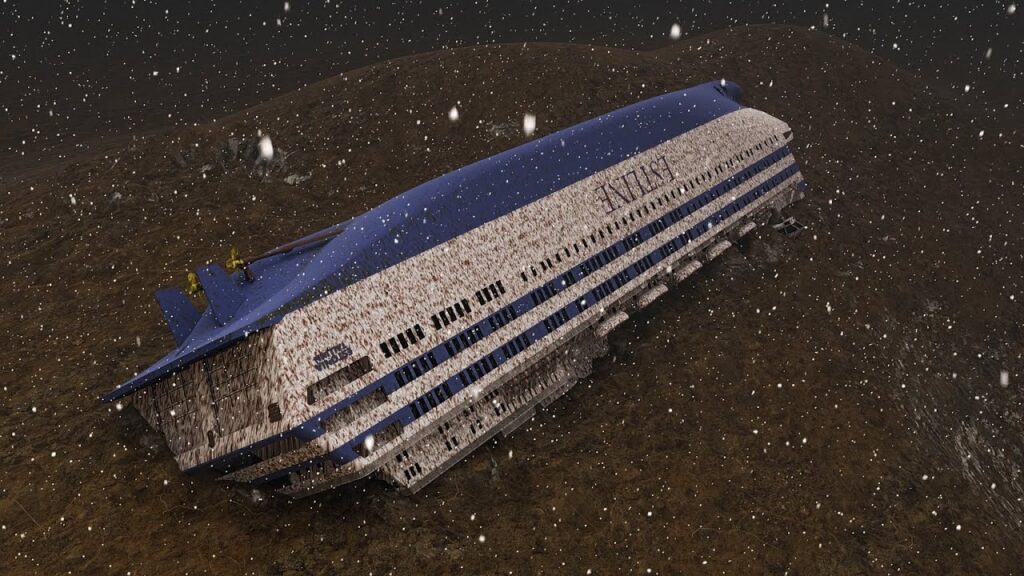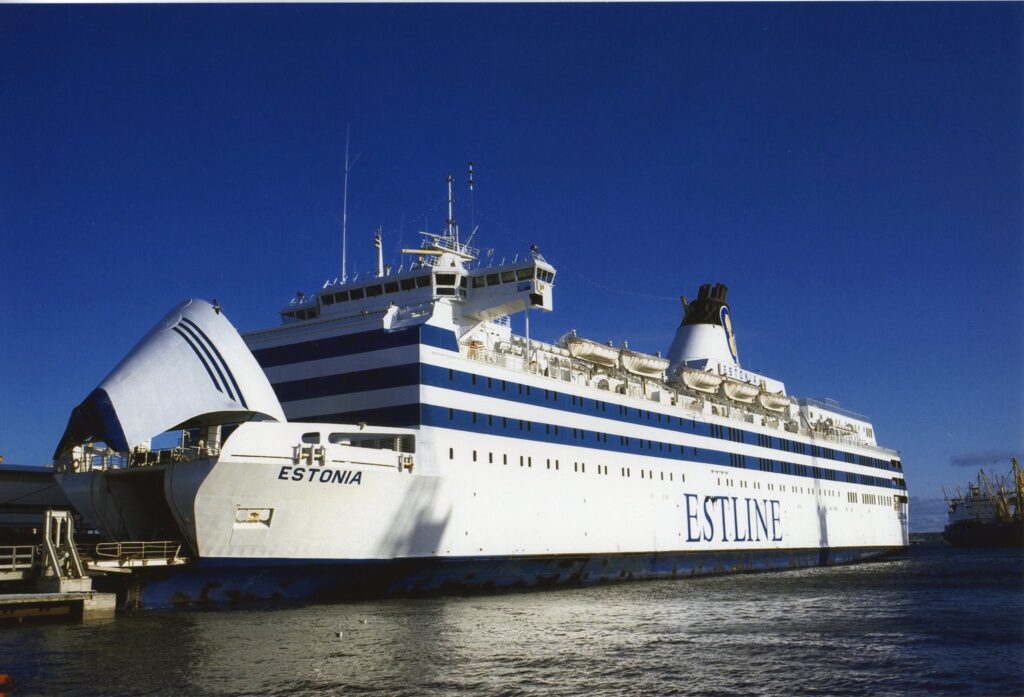The investigators of the Estonian Safety Investigation Bureau have discovered that the damage on the starboard side of the wreck of MS Estonia is considerably greater than previously estimated.
In 2021, investigators from the Estonian Safety Investigation Bureau thought the damage on the starboard side of the MS Estonia’s wreck was 22 metres long, but now they see it extends to more than 40 metres.
A photogrammetric survey of the wreck of MS Estonia was carried out by the Estonian Safety Investigation Bureau and the Swedish Accident Investigation Board between 7 June and 16 June.
The head of the Estonian investigation, Rene Arikas, told the country’s public broadcasting that while previous initial surveys showed the damage on the starboard side was about four metres high and 22 metres long, the investigators now see it is at least six metres high and “somewhere over 40 metres long”.
“It’s a deformation, which means there are through-holes, cracks, bruises; the outer cladding is inward in places. Because the damage continues under the hull, we can’t see the full extent of it, but the visible part is there in the region of about 40 metres,” Arikas said.
Various deformations
The investigators also identified various deformations on the seventh deck of the sunken ferry, such as broken and damaged boat decks. The damage on the starboard corner extends across the entire stern deck from the sixth deck to the seventh and eighth decks.
The new official investigation of the MS Estonia wreck was launched in the wake of the Swedish documentary, “Estonia: The Discovery that Changes Everything”, which premiered in 2020 and showed that the sunken cruise ferry had a large hole in the hull.
The documentary was produced by a team led by the Swedish author and journalist, Henrik Evertsson, who used remotely operated underwater robots and divers from a Norwegian company, Rockwater, to examine and videotape the wreck. Their footage revealed four metres high and 1.2 metres wide hole in the ferry’s hull, on the starboard side – that until that point, had never been mentioned or documented.

Jorgen Amdahl, a professor of marine technology at the Norwegian University of Science and Technology, said in the documentary that “it is not ruled out the damage played a big role in the sinking”.
The new revelation and the media storm that followed prompted the Estonian prime minister and foreign minister to meet with their Swedish and Finnish equivalents and announce that a “new technical investigation” would take place. On 9 July 2021, the Estonian icebreaker, EVA 316, and the Swedish research vessel, Electra, launched a new inspection into the shipwreck.
In addition, close relatives of the people who died in the sinking of the MS Estonia, established a foundation – Mare Liberum – and organised a privately initiated expedition to the wreck of the ferry in autumn 2021.

The disaster in 1994
MS Estonia was a 16,000-ton cruise ferry that began serving the Tallinn-Stockholm route in 1993 and was operated by the Swedish-Estonian shipping company, Estline. It was the largest ship sailing under the Estonian flag at the time. In fact, the elegant white and blue coloured ferry was seen as one of the symbols of newly found confidence of the young republic that had just restored its independence, three years prior.
But in the morning of 28 September 1994, the entire country of Estonia woke up in shock to the news that MS Estonia had sunk in the early hours. For Estonians, it was their very own “Kennedy moment” – everyone who was alive at the time, remembers where they were and what they were doing upon hearing the news.
The ship sank in the Baltic Sea while on a scheduled crossing, en route from Tallinn to Stockholm, where she had been expected in the morning. MS Estonia disappeared from the radar screens of other ships at around 01:50 EEST in international waters, about 22 nautical miles (41 kilometres) from the Finnish island of Utö. The ferry sank to the depth of 74 to 85 metres (243 to 279 feet) of water.

What made it headline news around the world was the huge loss of life. Of the 989 on board, only 138 were rescued alive (one of whom later died in the hospital). As such, it is the second-deadliest peacetime sinking of a European ship, after the RMS Titanic, and the deadliest peacetime shipwreck to have occurred in European waters, with 852 lives lost. Most of the victims were Swedes (501), followed by Estonians (285).
While the weather at the sea was rough at the time of the disaster – with strong winds and waves of four to six metres (13 to 20 feet) – the ferry was supposedly built to handle the conditions. Esa Mäkela, the then captain of MS Silja Europa – a passenger ferry to first answer MS Estonia’s Mayday call and subsequently led the on-scene rescue effort – later described the weather as a typical autumn storm in the Baltic Sea.
The official report
The official disaster report, published in 1997, said the fatal event started when the locks on the ferry’s bow door failed from the strain of the waves and the door separated from the rest of the vessel, pulling the ramp behind it ajar. This allowed water into the vehicle deck, capsizing, and ultimately sinking the ship.
As always with big disasters, conspiracy theories that questioned the official report, followed – from an explosion onboard the ferry to a collision with an unidentified submarine. Most of the conspiracy theories focus on the loud bangs many survivors heard approximately half an hour to an hour before MS Estonia sank – and the fact that the ship sank so quickly (in about half an hour), arguing that the ferry of that type should have remained afloat even after capsizing.
In subsequent years, the lobby groups representing the victims’ families on several occasions demanded a new investigation. Until the 2020 Swedish documentary, the Estonian, Swedish and Finnish governments always turned a deaf ear, prompting accusations they lacked transparency when it came to MS Estonia.

